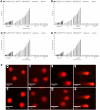Characterization and Cytotoxicity of Polyprenol Lipid and Vitamin E-TPGS Hybrid Nanoparticles for Betulinic Acid and Low-Substituted Hydroxyl Fullerenol in MHCC97H and L02 Cells
- PMID: 32368052
- PMCID: PMC7184125
- DOI: 10.2147/IJN.S249773
Characterization and Cytotoxicity of Polyprenol Lipid and Vitamin E-TPGS Hybrid Nanoparticles for Betulinic Acid and Low-Substituted Hydroxyl Fullerenol in MHCC97H and L02 Cells
Abstract
Background: This study demonstrated an innovative formulation including the polyprenol (GBP) lipid and vitamin E-TPGS hybrid nanoparticles (NPs) which was aimed to control the transfer of betulinic acid (BA) and low-substituted hydroxyl fullerenol (C60(OH)n). Additionally, it developed BA-C60(OH)n-GBP-TPGS-NPs delivery system and researched the anti-hepatocellular carcinoma (HCC) effects.
Materials and methods: The NPs were prepared by nanoprecipitation with ultrasonic-assisted emulsification (UAE) method. It was characterized by scanning electronic microscopy (SEM), transmission electron microscopy (TEM), FTIR spectrum, size distribution and zeta potential. Physical and chemical properties were evaluated through measurement of drug release, stability studies, drug loading efficiency (DE) and encapsulation efficiency (EE). Biological activities were evaluated through measurement of MTT assay, lactate dehydrogenase leakage assay (LDH), cell proliferation assays, cell apoptosis analysis, comet assay, wound healing assay, cell invasion and Western blot analysis.
Results and conclusions: The NPs exhibited clear distribution characteristics, improved solubility and stability. BA and C60(OH)n for the NPs displayed a biphasic release pattern with sustained drug release properties. The mixture of C60(OH)n with different hydroxyl groups may have a certain effect on the stability of the NPs system itself. The NPs could effectively inhibit MHCC97H cell proliferation, migration and invasion in vitro. Combined use of C60(OH)n and BA in GBP lipids may improve the inhibit effect of C60(OH)n or BA against HCC cells and reduce cytotoxicity and genotoxicity of C60(OH)n for normal cells. We concluded that one of the important mechanisms of BA-C60(OH)n-GBP-TPGS-NPs inhibiting MHCC97H cells is achieved by up-regulating the expression of Caspase-3, Caspase-8 and Caspase-9.
Keywords: anti-tumor; betulinic acid; fullerenol; polyprenol; vitamin E-TPGS.
© 2020 Tao et al.
Conflict of interest statement
The authors declare no conflict of interest.
Figures








Similar articles
-
Poly(lactic-co-glycolic acid)-loaded nanoparticles of betulinic acid for improved treatment of hepatic cancer: characterization, in vitro and in vivo evaluations.Int J Nanomedicine. 2018 Feb 16;13:975-990. doi: 10.2147/IJN.S157391. eCollection 2018. Int J Nanomedicine. 2018. PMID: 29497292 Free PMC article.
-
Characterization, Cytotoxicity and Genotoxicity of Graphene Oxide and Folate Coupled Chitosan Nanocomposites Loading Polyprenol and Fullerene Based Nanoemulsion Against MHCC97H Cells.J Biomed Nanotechnol. 2019 Mar 1;15(3):555-570. doi: 10.1166/jbn.2019.2698. J Biomed Nanotechnol. 2019. PMID: 31165700
-
Development and evaluation of long-circulating nanoparticles loaded with betulinic acid for improved anti-tumor efficacy.Int J Pharm. 2017 Oct 5;531(1):153-166. doi: 10.1016/j.ijpharm.2017.08.076. Epub 2017 Aug 18. Int J Pharm. 2017. PMID: 28823888
-
Advancements in Betulinic Acid-Loaded Nanoformulations for Enhanced Anti-Tumor Therapy.Int J Nanomedicine. 2024 Dec 29;19:14075-14103. doi: 10.2147/IJN.S493489. eCollection 2024. Int J Nanomedicine. 2024. PMID: 39748899 Free PMC article. Review.
-
Therapeutic applications of betulinic acid nanoformulations.Ann N Y Acad Sci. 2018 Jun;1421(1):5-18. doi: 10.1111/nyas.13570. Epub 2018 Jan 29. Ann N Y Acad Sci. 2018. PMID: 29377164 Review.
Cited by
-
Drug Delivery Systems of Betulin and Its Derivatives: An Overview.Biomedicines. 2024 May 24;12(6):1168. doi: 10.3390/biomedicines12061168. Biomedicines. 2024. PMID: 38927375 Free PMC article. Review.
-
Dasatinib self-assembled nanoparticles decorated with hyaluronic acid for targeted treatment of tumors to overcome multidrug resistance.Drug Deliv. 2021 Dec;28(1):670-679. doi: 10.1080/10717544.2021.1905751. Drug Deliv. 2021. PMID: 33792436 Free PMC article.
-
Inhibition of SREBP-1 Activation by a Novel Small-Molecule Inhibitor Enhances the Sensitivity of Hepatocellular Carcinoma Tissue to Radiofrequency Ablation.Front Oncol. 2021 Nov 26;11:796152. doi: 10.3389/fonc.2021.796152. eCollection 2021. Front Oncol. 2021. PMID: 34900747 Free PMC article.
-
MARCH6 promotes hepatocellular carcinoma development through up-regulation of ATF2.BMC Cancer. 2021 Jul 17;21(1):827. doi: 10.1186/s12885-021-08540-x. BMC Cancer. 2021. PMID: 34273954 Free PMC article.
-
Gold Nanoparticles Coated with SH-PEG-NH2 and Loaded with Ziyuglycoside I for Promoting Autophagy in Hematopoietic Stem Cells.Int J Nanomedicine. 2023 Mar 21;18:1347-1362. doi: 10.2147/IJN.S399568. eCollection 2023. Int J Nanomedicine. 2023. PMID: 36974074 Free PMC article.
References
MeSH terms
Substances
LinkOut - more resources
Full Text Sources
Medical
Research Materials

